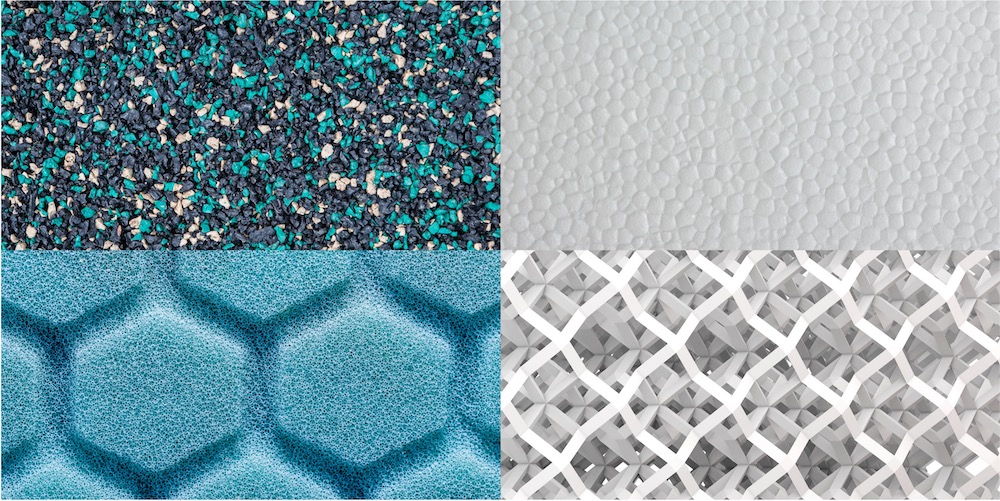Shock Absorbing Materials in Sport

2023-06 Force reduction measures the ability of a material to absorb an impact force. Typically, the value is expressed as a percentage reduction in the force relative to the maximum force measured on a concrete surface. Accordingly, shock absorption has been used to classify sports surfaces, test protective equipment or assess footwear used by athletes. A variety of materials have been trialed, tested and used depending on the application in sport.
Use of Advanced Materials to reduce Impact Forces
Rubber granules used as performance infill in turf systems or bound together by polyurethane elastomers (see image top left) have traditionally been specified in surface systems like third generation turf football pitches or athletic running tracks. Ranging from so called ‘shockpads’ installed in-situ to prefabricated underlay, SBR and EPDM-based rubber materials have been widely used. When looking at pre-fabricated sheets or rolled goods, foam materials (see image bottom left), expanded polyolefines and expanded thermoplastic polyurethane (see image top right) have been applied in surfacing applications based on use of these materials as part of athletic footwear soles, e.g. heel seat, midsole or outsole. Particularly in footwear, advancement in additive manufacturing have seen 3-dimensional lattice structures (see image bottom right) being designed and printed by using polymeric materials. Similarly, advanced materials are used in protective equipment and helmets to protect athletes from impact forces in contact or motorized sports.
Additional information
If you are interested to gain further insights into the use of advanced materials in sports, please contact chemneera.
References: Image Source Shutterstock



